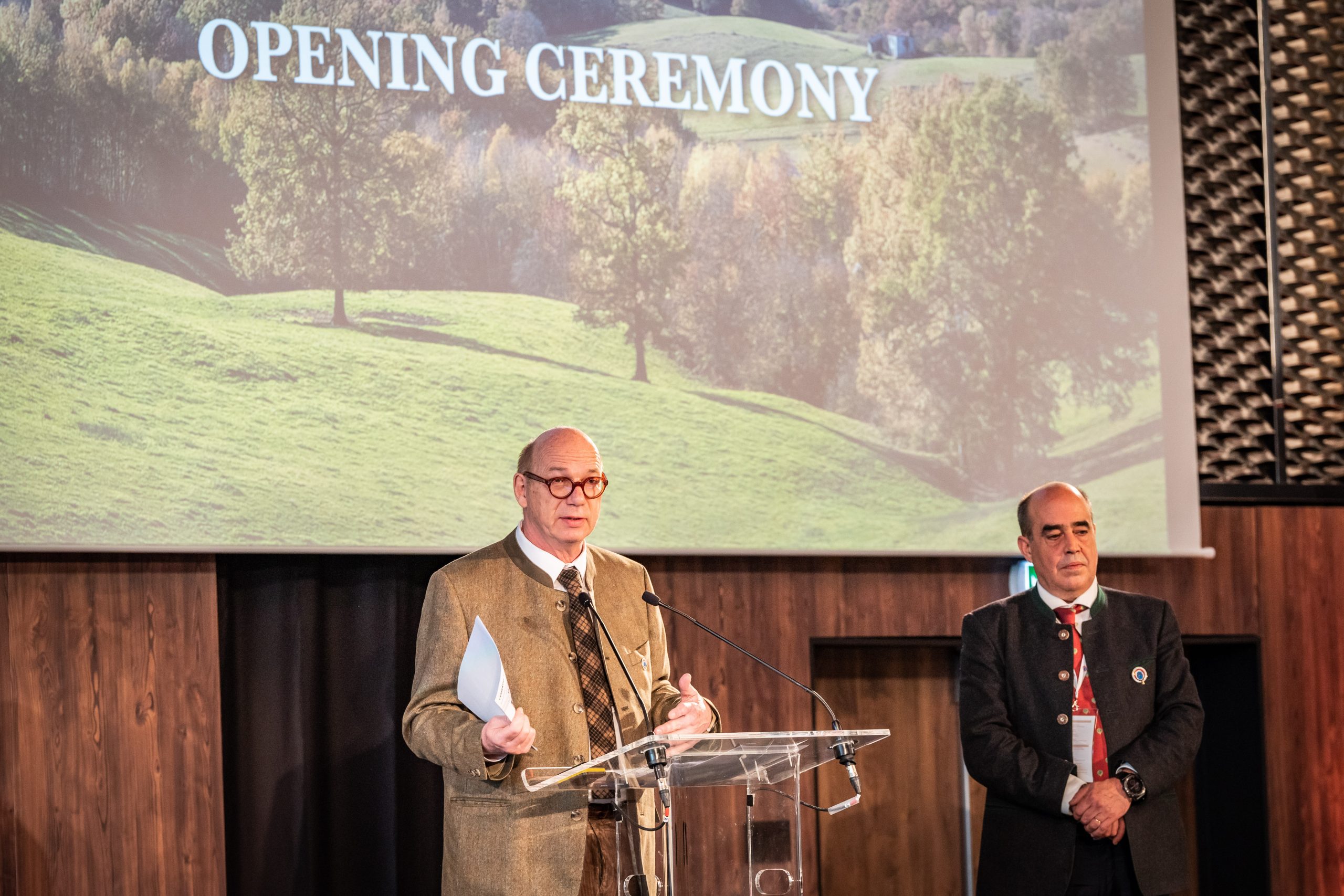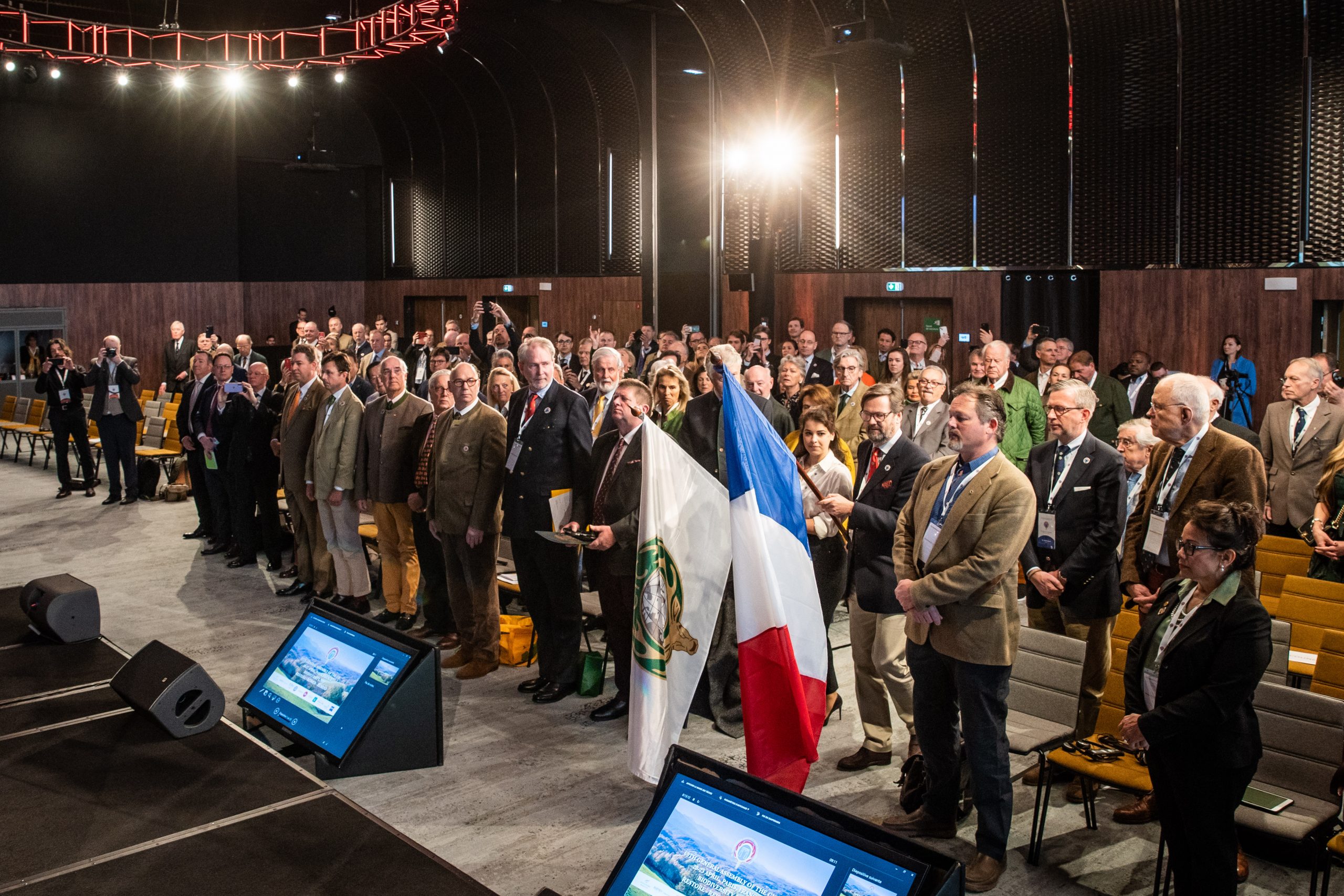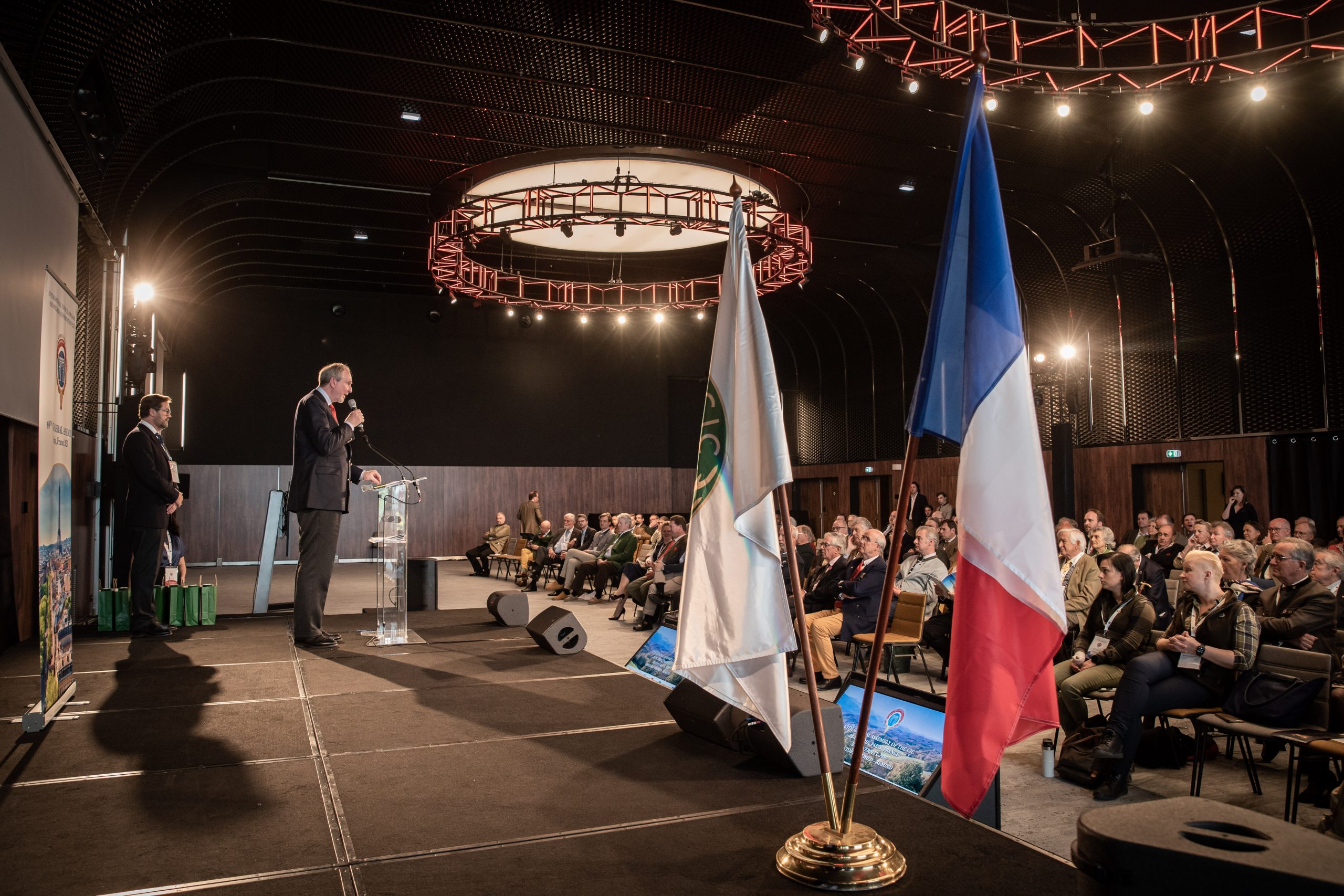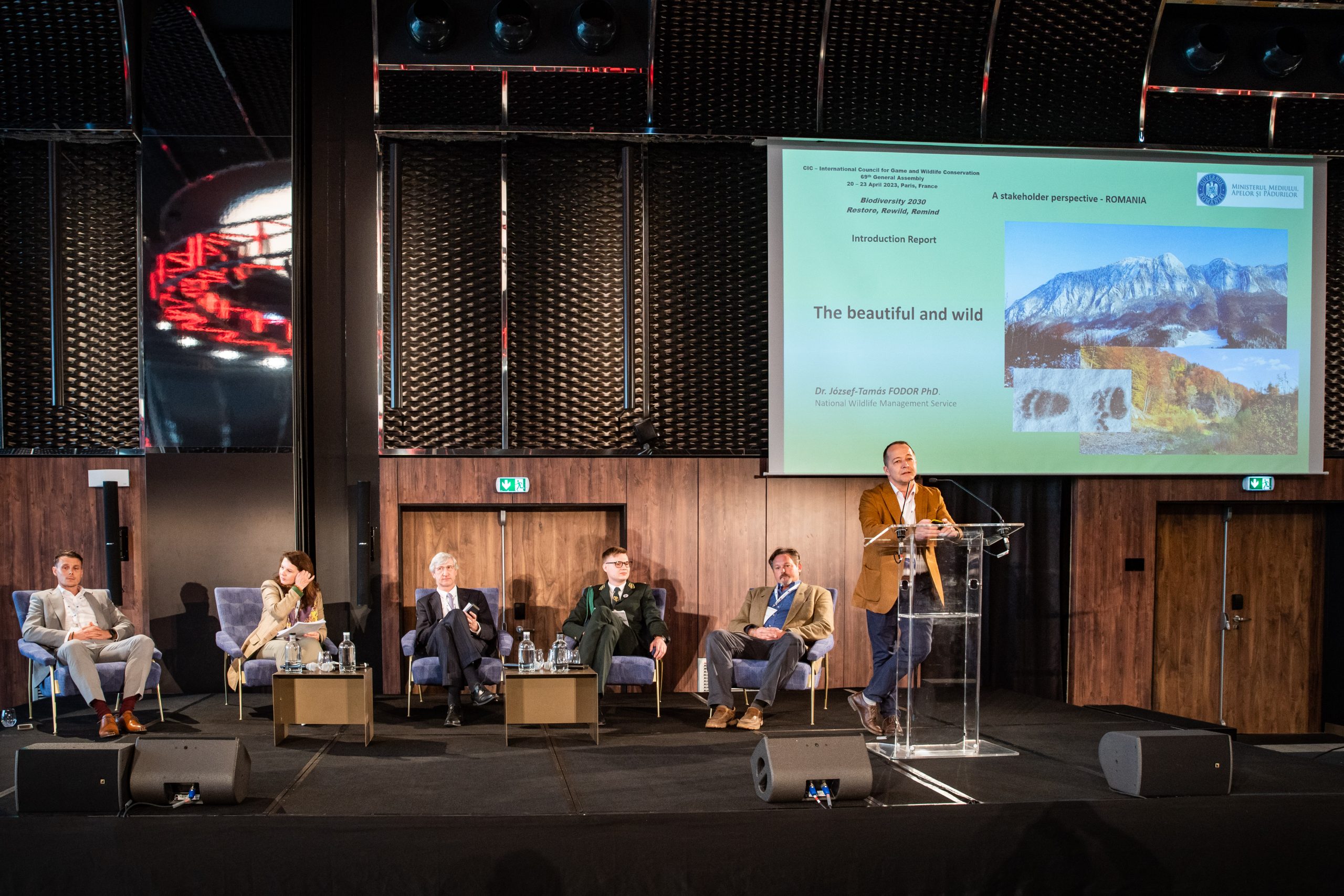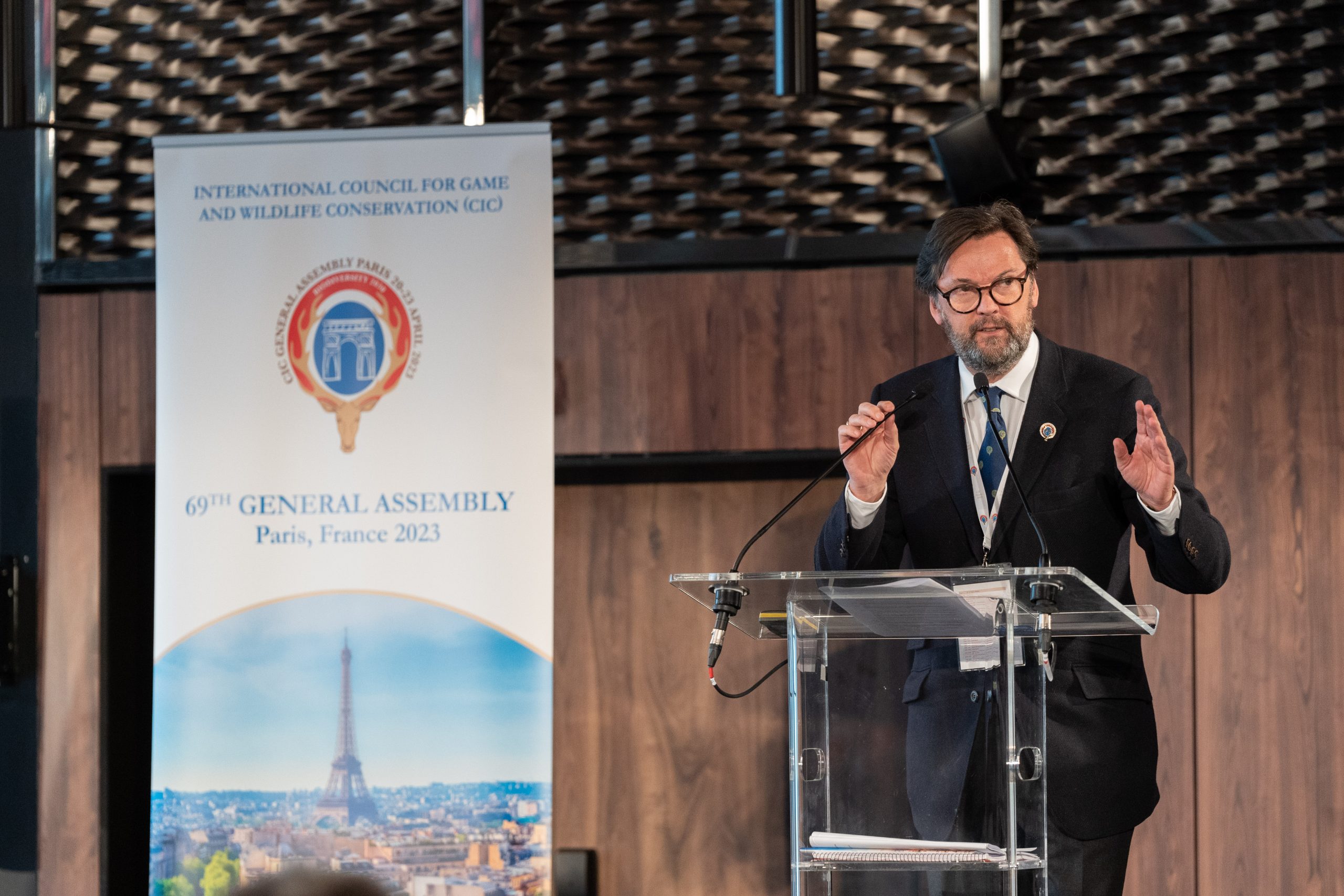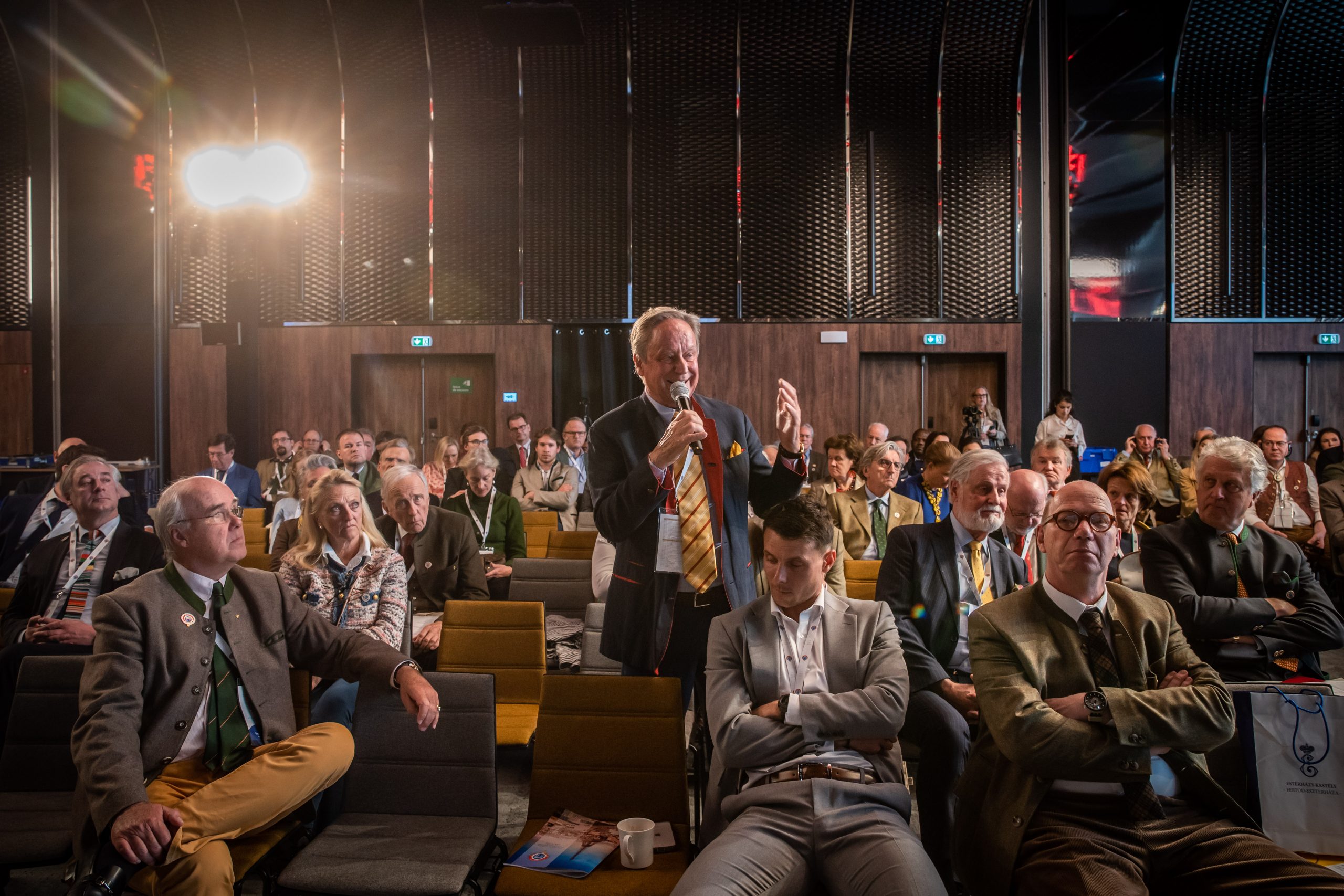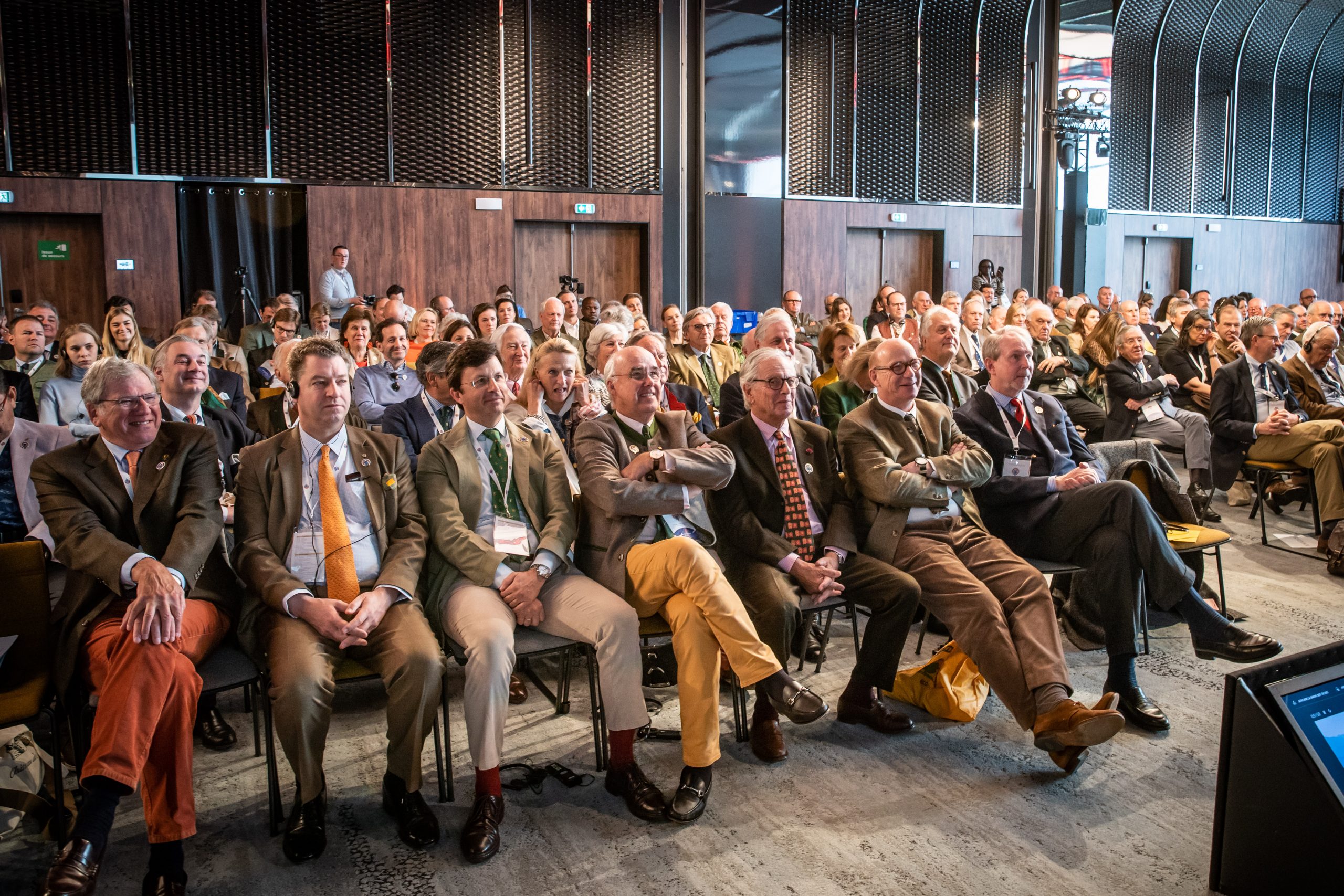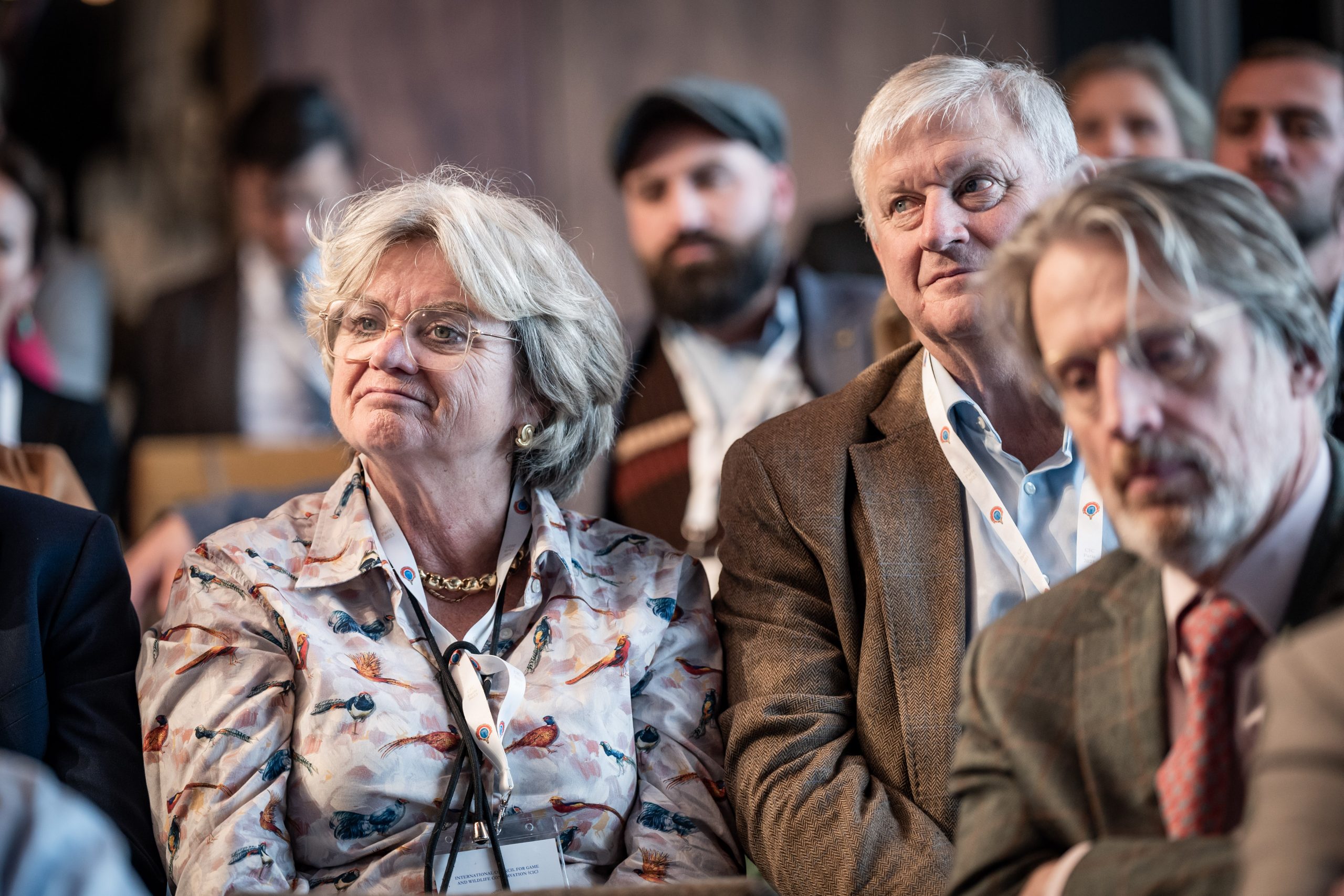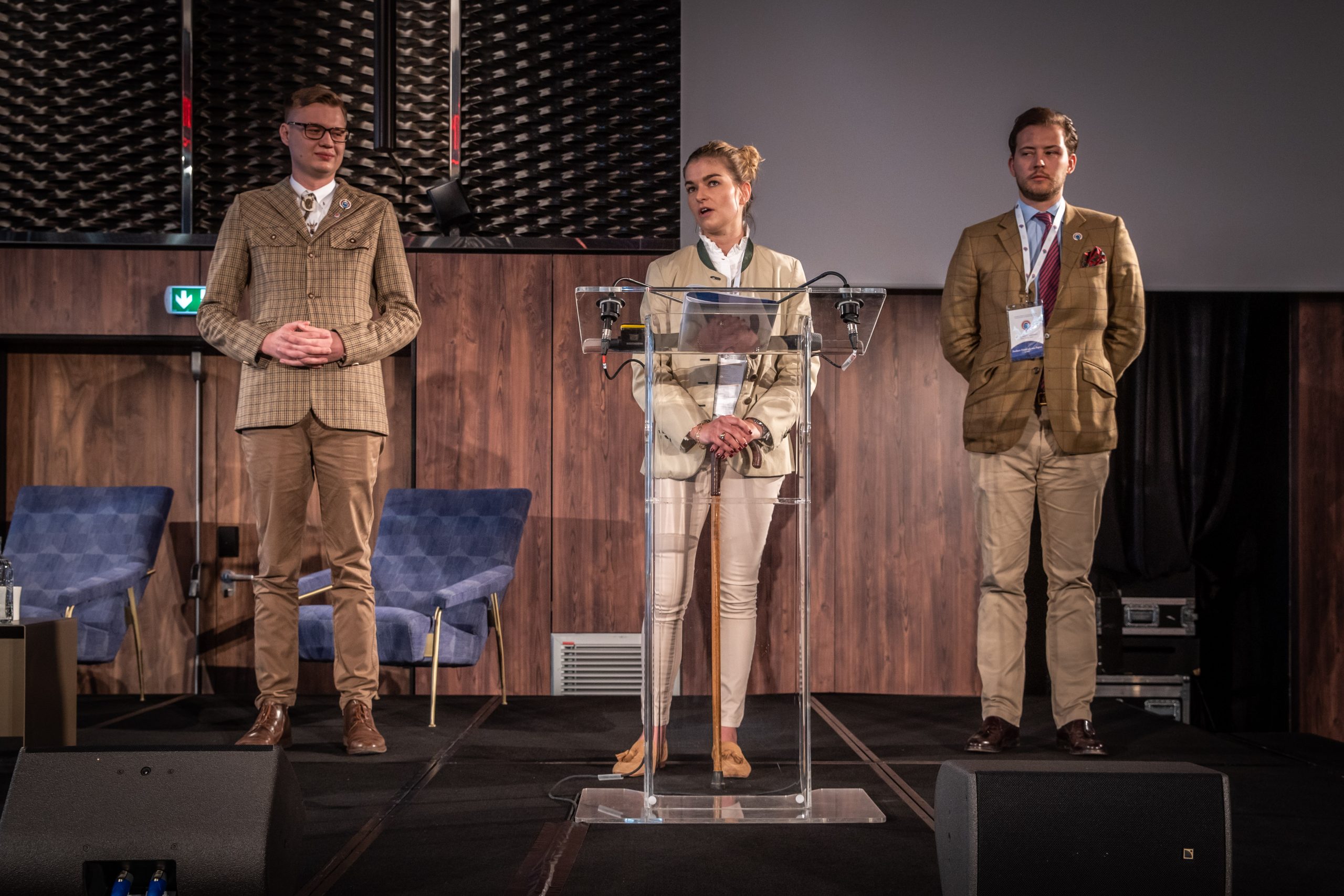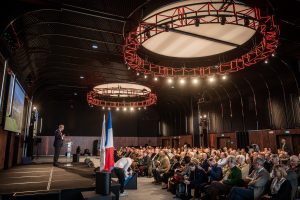
With close to 400 participants from more than 40 countries, the 69th CIC General Assembly in Paris was among the first international conferences designed to move into implementation of the recently adopted 2030 Global Biodiversity Framework (GBF) and to support the UN Decade on Ecosystem Restoration.
The insights taken from a wide range of fields and disciplines will be used to create the first ever CIC Programme, which will outline the organisation’s priorities and activities up until 2030 which will mark the 100th anniversary of the CIC.
The programme, due to be adopted at the 70th CIC General Assembly next year, will not only look to provide support to the GBF and the UN Decade on Ecosystem Restoration – it will also address other global targets and frameworks that contribute to conservation and sustainable development, such as the UN Sustainable Development Goals (SDG).
Leading figures in the conservation world convened in Paris for the two-day conference, with keynote speeches and interventions from the heads of numerous environmental conventions and agreements, such as the Convention on International Trade in Endangered Species of Wild Fauna and Flora (CITES), the Convention on Migratory Species (CMS), the Ramsar Convention on Wetlands, the World Organisation for Animal Health (WOAH) and the African-Eurasian Migratory Waterbird Agreement (AEWA).
Dr Philipp Harmer, President of the CIC, opened the conference with a Welcome Speech on the importance of the recently adopted GBF, noting how it is well in line with the CIC Statutes adopted at last year’s General Assembly and the way in which hunters are well positioned to implement them given their existing contributions to civil society.
Ivonne Higuero, Secretary General of CITES, highlighted how funding from non-state actors like the CIC can bring the voices of indigenous peoples and local communities to the table in international policy making processes. This builds on the recent work of the CIC, which supported the attendance of community representatives at IUCN APAC 2022 and CITES CoP19.
Later on in the proceedings, a resolution on this issue was adopted at the General Assembly calling on the CIC to establish a Working Group on Indigenous People and Local Communities.
Expanding on how the CIC’s funding can be used to contribute to biodiversity was Dr Klaus Hackländer, President of the CIC Applied Science Division, who outlined how supporting young researchers and projects could lead to insights on global challenges – the impact of climate change on chamois and the need for research on their habitat use was given as one example of this.
Amy Fraenkel, Executive Secretary of CMS, listed four key ways the hunting and sustainable use community could contribute to migratory species within the context of the GBF.
This included: 1) Raising awareness on CMS policies on migratory species and engaging CIC state and national association members in their implementation, 2) Contributing to monitoring and research methods for migratory species, 3) Ensuring community benefits, 4) Building public support for sustainable legal hunting and its contribution to conservation outcomes.
Other speakers pointed to the successful efforts already being conducted by hunters to support biodiversity, which will need to be continued and further developed going forwards. Dr. Jean-Phillipe Dop, Deputy Director General of WOAH, and Dr Jacques Trouvilliez, Executive Secretary of AEWA, noted the work being done by hunters to prevent the spread of wildlife diseases, such as avian influenza, through monitoring and preventative methods, while also referring to CIC efforts with its Flying Vets project to support UN One Health pilot countries, notably Mongolia.
Again, the General Assembly acted on this discussion by adopting a resolution calling on the CIC to support the UN One Health efforts through “citizen science and contributing to the efforts of monitoring and preventing future zoonotic diseases.”
Commenting on the need to understand society on a deeper level in order to successfully communicate the successes of the sustainable use community was Shane Mahoney, President of the CIC Policy & Law Division. To achieve this, it was suggested that there will be a need to use concepts such as One Health and the Wild Harvest initiative to communicate our message to wider audiences.
It should be noted that the CIC will become the first international partner in the Wild Harvest initiative to scale up their experience in North America to a global level, with particular focus on wildlife economy.
Dr Musonda Mumba, Secretary General of the Ramsar Convention on Wetlands, talked about the importance of promoting the principles of “wise use,” which takes into consideration broader ecosystem approaches within the context of sustainable development when utilising wildlife resources. This was a term already used in 1971 by the CIC members who were a driving force in the establishment of the Ramsar Convention.
Discussing the effectiveness of certification schemes in supporting conservation and rural communities was Alec van Havre, Project Officer at the European Landowners’ Organization (ELO), who stated that combining the scientific method with the experience and know-how of countryside actors allowed ELO members to promote principles of best wildlife management practice through their own voluntary certification scheme, the Wildlife Estates Label.
Willy Schraen, President of the French National Hunters Federation (FNC), was another speaker that discussed the importance of the CIC for rural stakeholders. As part of his welcome speech in the Opening Ceremony, he noted that the CIC is well positioned to become a global entity that unites all forces from the countryside and works to preserve traditional ways of life.
In addition to implementing the outcomes from the Technical Sessions, the 2030 CIC Programme will also incorporate several new resolutions which were adopted as part of conference proceedings.
The newly elected CIC Executive Committee will be leading the CIC in developing and implementing the CIC Programme – see our press release for full details on the Executive Committee.
Among the other notable activities at the General Assembly was the presentation of several CIC awards and prizes. The 2023 Hunting in Art Prize – which recognises artists for enhancing the cultural values of nature and hunting – was awarded to Luis de Sousa Cabral after a vote was taken on the best wildlife sculptures present at the Art Exhibition hosted as part of the General Assembly.
The recipient of the 2023 Young Opinion Research Award, aimed at supporting researchers whose projects contribute to the sustainable use of wildlife, was Deogratias Gervas Katwana for his thesis on, Patterns of large carnivore depredation on livestock and community tolerance behavior around Selous-Nyerere ecosystem; A case study of Liwale district in southern Tanzania.
The Edmond Blanc Prize was also presented as part of this year’s General Assembly. The prize, which hosts two categories (Edmond Blanc Prize and Edmond Blanc Diploma), awards outstanding efforts in wildlife conservation and game management that are based on the principles of sustainable wildlife use
The 2023 Edmond Blanc Prize was given to the Deutsche Wildtier Stiftung (German Wildlife Foundation), for their project, Gut Klepelshagen, which demonstrated how agriculture and forestry can be harmonised with wildlife conservation in a 2,600-hectare model farm hosting over 2,900 animal and plant species, including free roaming big game. The award was accepted by Dr Klaus Hackländer, Chairman of Deutsche Wildtier Stiftung and President of the CIC Applied Science Division.
The 2023 Edmond Blanc Diploma was awarded to Erongo Verzeichnis (EV) for their Age Related Trophy Measuring System; Kai Uwe Denker and Axel Cramer are two of the well-known representatives and founders of the EV.
The CIC congratulates the winners for their incredible contributions to biodiversity conservation and sustainable use, and welcomes others to follow their examples of best practice.

